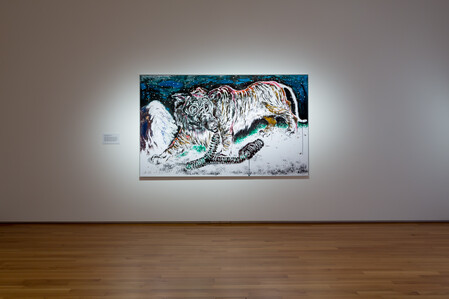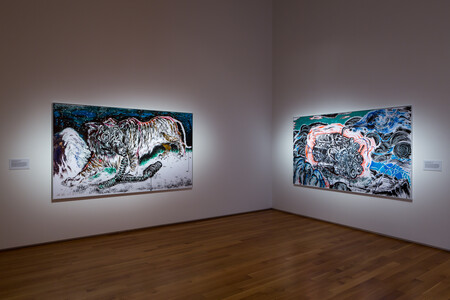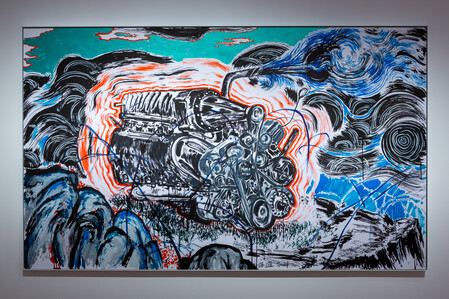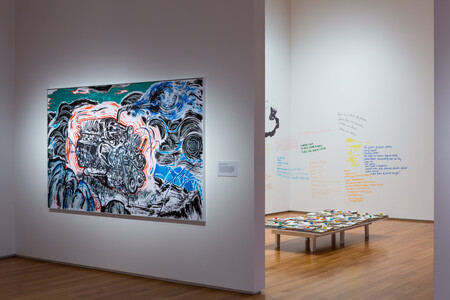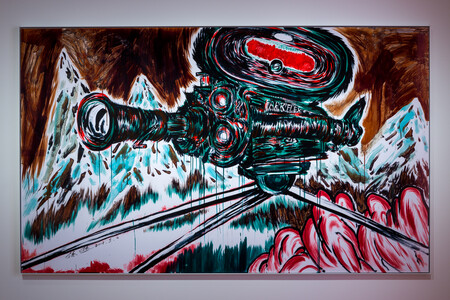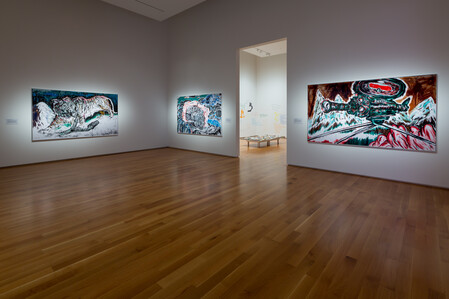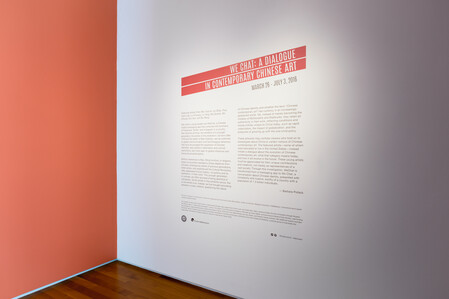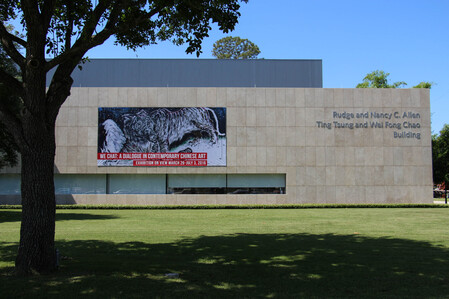Group Exhibition Asia Society, Houston, U.S.A.
WeChat is a mobile messaging app, developed in China, with more than 600 million users worldwide. Combining the functions of Facebook, Twitter, and Instagram, WeChat has become the primary means of communication for members of China's younger generation, now living and working throughout the world.
This emphasis on global communication transcending local culture is the key focus of the exhibition, We Chat: A Dialogue in Contemporary Chinese Art, which brings together 10 young Chinese artists, some still based in mainland China and others living abroad. All of these artists were born after 1976, a watershed year that marks both Mao Zedong's death and the end of the Cultural Revolution. As such, these artists have enjoyed a more liberalized environment growing up in China with more freedom and opportunities than the previous generation of Chinese artists. Also, these young people are products of the opening up of China and its rapidly expanding economy over the past three decades, which has allowed them more access to information about international art movements and expanded career advantages than their teachers and mentors had.
The exhibition investigates the sharp departure the artworks of this new generation make from those of the earlier generation that came to international attention in the 1990s. The previous generation, which emerged mainly in response to the Tiananmen Square events, often looked back on Chinese history, either using iconography from the Cultural Revolution or even further back, to artifacts and craftsmanship of the Imperial dynasties. In contrast, this younger generation offers a break from the past, looking towards a future that is rooted in internet culture and new media. Most importantly, while past generations of Chinese artists made work asserting a Chinese identity, or "Chinese-ness", often situated in opposition to western culture, this younger generation was raised in a period of rapid globalization and refuses to be pigeon-holed by culture, politics, or geographic boundaries.
We Chat: A Dialogue in Contemporary Chinese Art explores this paradigm shift by bringing together artists who are based both in China and abroad, underscoring that location is no longer the determining factor in the production of these artworks. There actually is a long tradition of Chinese artists working in the diaspora. Such leading artists of the 1990s as Ai Weiwei, Cai Guo Qiang, Huang Yong Ping, and Xu Bing all spent significant time in the west. However, rather than underscoring the western influence on their work, they resorted to appropriation of Chinese history to insert a local culture into the global art dialogue.
In contrast, in the exhibition We Chat younger artists by and large eschew a Chinese aesthetic and reject the notion that local culture continues to frame Chinese contemporary art. Liberated from the past, they explore issues primarily concerned with the impact of globalization on their personal lives: the rapid urbanization of their hometowns, eradicating the past; the extreme shift in values between their parents and themselves resulting in a pronounced generation gap; the loneliness of being raised as only children under the one-child policy; and the pressures to succeed in a competitive, increasingly capitalistic society. At the same time, there is evidence of humor and irony in their works, often looking at the issues in all their potential absurdity.
In conclusion, We Chat: A Dialogue in Contemporary Chinese Art will be an important exhibition exploring this new notion of identity emerging among Chinese artists. Given the circumstances in China over the past three decades, these artists who have grown up with these changes are uniquely situated to imagine a new definition of identity, escaping local parameters yet injecting a new position into the dialogue of global contemporary art.
Artists include CHEN Wei, GUO Xi, JIN Shan, Pixy Yijun LIAO, LIU Chuang, LU Yang, MA Qiusha, SHI Zhiying, SUN Xun, and Bo WANG.
More Pictures:

